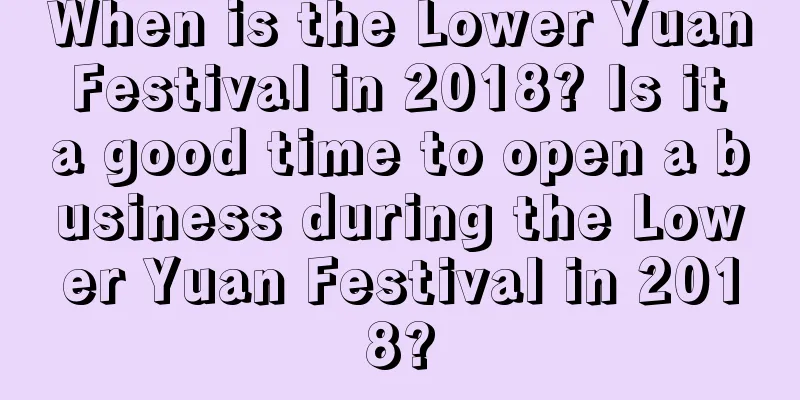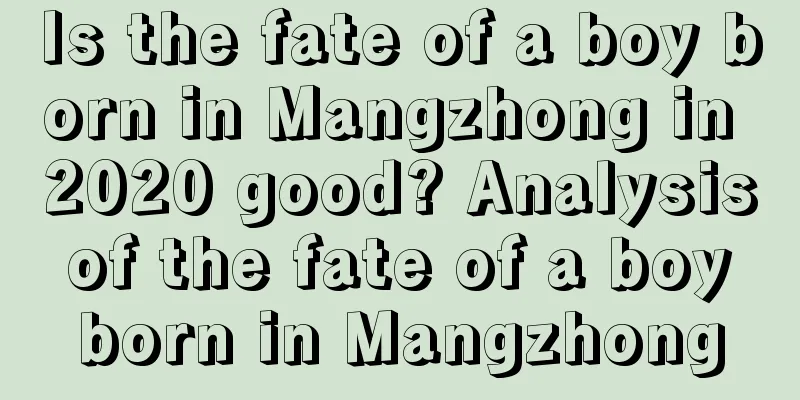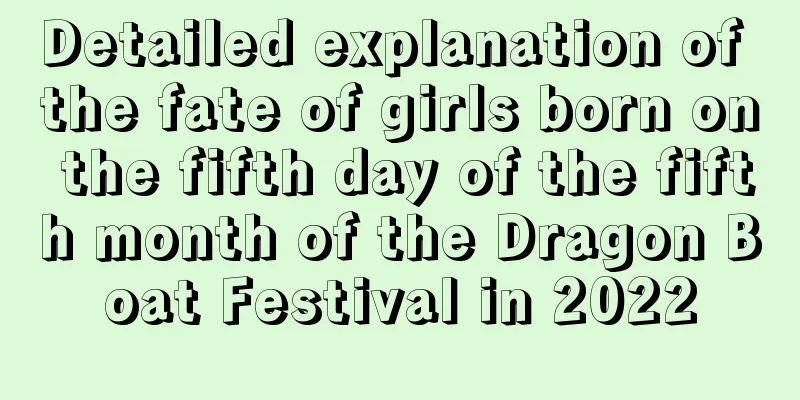What are the Feng Shui legends about peach wood warding off evil spirits?

|
Introduction: Speaking of peach wood sword, I believe many friends are familiar with it, because peach wood sword often appears in many film and television works, letting us know that it has the function of exorcising evil spirits. However, I believe that not many people know much about the legend of the peach wood sword. In this issue, the editor will lead you to learn about the legendary story about the peach wood sword. Now, let’s follow the editor to take a look. Let’s take a look at this Feng Shui story that is popular among the people. Ancient legend about peach wood swordIn ancient Chinese mythology, it is said that there is a ghost world. In the middle of the world, there is a mountain. On the mountain, there is a huge peach tree covering three thousand miles. On the top of the tree, there is a golden rooster. Every morning when the golden rooster crows, the ghosts that wander out at night must rush back to the ghost realm. The gate to the ghost realm is located in the northeast of the peach tree. Two gods named Shentu and Yulei stand beside the gate. If a ghost did something harmful to the world at night, Shentu and Yulei would immediately find and catch it, tie it up with a rope made of reed, and feed it to the tiger. Therefore, all the ghosts in the world are afraid of Shentu and Yulei. So people began to carve their images out of peach wood and place them at their doorsteps to ward off evil and harm. Later, people simply carved the names of Shentu and Yulei on peach wood boards, believing that doing so could also suppress evil. This kind of peach wood board was later called "Tao Fu". In the Song Dynasty, people began to write couplets on peach wood boards. First, to retain the meaning of peach wood in warding off evil spirits, second, to express their good wishes, and third, to decorate the door for beauty. People also write couplets on red paper, which symbolizes happiness and good luck, and paste them on both sides of doors and windows during the New Year to express their good wishes for good luck in the coming year. "When the sun shines brightly in every household, people always replace the old charms with new ones." The folk legend that peach wood can ward off evil spirits has been around for a long time. When did it originate and where was it recorded? There are many legends about using peach wood to cure ghosts. The "Huainanzi Quanyan" says: "Yi died at the mouth of a peach tree." Xu Shen of the Eastern Han Dynasty commented: "Kou is a big stick made of peach wood. It was used to kill Yi. Since then, ghosts have been afraid of peaches." Yi was famous for his archery skills. Feng Meng became Yi's apprentice and learned the skill. After Yi finished the training, Meng turned against Yi by attacking him from behind with a peach wood club and smashing Yi on the back of the head. After Yi died, he became an official in charge of all ghosts. The ancients' association of peach wood with warding off evil spirits is related to this myth. Just imagine, the peach wood stick can even kill Yi, the leader of all ghosts, so it is even more of a piece of cake to use it to cure ghosts. In addition, "Zuo Zhuan" recorded an incident in the fourth year of Zhaogong (538 BC) that peach wood can exert mysterious powers: "In ancient times, people stored ice in the northern land... When they stored the ice, they used black male livestock and black millet to worship the god of cold; when they took the ice out, they used peach bows and thorn arrows to perform a ritual to ward off disasters." This passage means that the ancients hid ice in ice cellars in deep mountains and valleys in winter. When storing the ice, they used black male livestock and black millet to worship the god of cold; when taking the ice out, they used peach bows and thorn arrows to perform a ritual to ward off disasters. Peach is the essence of the five woods, so it can suppress evil spirits. Legend has it that the Nanji Immortal, who dominates the lifespan of humans, always holds a huge fairy peach in his palm, so peaches are said to ward off evil spirits, cure diseases, and prolong life. The fairy peach in the hands of the South Pole Immortal is said to be the fat peach produced in the ancient Feizi Kingdom. The ancient Feizi Kingdom, which is today's Feicheng City in Shandong Province, was named after the Fei people who lived scattered here during the Western Zhou Dynasty. At that time, the Fei people migrated here from the East China Sea. The peach tree, the treasure of Dushuo Mountain in the East China Sea, was also transplanted to the Feizi Kingdom by the Fei people. The Book of Han, Geography, states: "There is Feicheng County in Taishan County, which is what Ying Shao called the 'Feizi Kingdom'." According to the Preface to Feicheng County Records in the 17th year of the Guangxu Period of the Qing Dynasty (1891 AD), "Feicheng was the ancient Feizi Kingdom. It was incorporated into Lu during the Spring and Autumn Period and became part of Qi County. It belonged to Taishan County in the Han Dynasty." Feicheng has a long history of peach planting. According to "Zuo Zhuan" in the Spring and Autumn Annals, in the 17th year of Duke Xiang of Lu, Qi and Lu were at war. The Qi army was divided into two routes and surrounded the two wings of Lu: one was Fang and the other was Tao, that is, the Qi people surrounded the northern wall of Lu. In the 13th year of Duke Xiang of Lu, the border of Lu had reached the area of Changqing in present-day Jinan, so the "Tao" surrounded by the Qi people should be Feicheng in the south of Changqing today (as evidenced by the Qi Great Wall in the north of Feicheng today). It can be seen that peach trees were already planted in large numbers in the place called "Tao" at that time. The fact that Zuo Qiuming, the author of Zuo Zhuan, was from Feicheng further proves that Feicheng means "peach" and "peach" means Feicheng. So why is it said that only peach wood from Feicheng can ward off evil spirits?It turns out that to the west of the old Feicheng County, there is a mountain called Tao (Tao) Mountain. Between Tao Mountain and Xiaotai Mountain, the top of the mountain is surrounded by cliffs that rise from the ground to the sky. They are majestic and steep, stretching for dozens of miles. Seventy-two caves are scattered on the cliffs like flowers scattered by fairies. In these seventy-two caves, there are monsters and demons. Whenever night falls, the monsters from the seventy-two caves would come out of their caves and rush into Feicheng, causing chaos and wreaking havoc on the people. When the news reached Dushuo Mountain in the East China Sea, the two gods Shentu and Yulei on the mountain were furious. They quickly came to Feicheng, used local materials, broke peach branches as weapons, and beat the demons and monsters to death, injury, or escape. The monster that managed to escape was frightened to death when he saw the peach branch. Because the East China Sea and Feicheng are oriented from northwest to southeast, the peach branches that the two gods Shenyu picked when they arrived in Feicheng were facing southeast, so the peach branches facing southeast became spiritual. From then on, local people would break off peach wood branches facing southeast, make them into swords and hang them indoors, or carve them into peach men or peach charms and hang them on beams or behind doors. Demons and monsters would flee at the sight of them and never dare to approach again. The Han Dynasty's "Customs and Meanings" stated that "on New Year's Eve, people decorate with peach figures... and use sunflowers to ward off evil." This custom is actually an explanation of the two gods Shen Yu using peach wood from Feicheng to ward off evil. The belief that peach wood can ward off evil spirits has a long history. According to the "Ciyuan", in ancient times people carved figures from peach wood and placed them in the doorway to ward off evil spirits. During the Han Dynasty, peach seals were carved and hung on door panels, and were called peach seals. In the Book of Rituals of the Later Han Dynasty, it is said that "In the mid-summer month, all things flourish. At the summer solstice, the yin energy begins to emerge, and there is a fear that things will not flourish"... Use a peach seal that is six inches long and three inches square, and write on it in five colors in the same way, and put it on the door. In the Song Dynasty, images of the gods Shentu and Yulei were carved or their names were simply written on two door panels. They were also called "peach charms" or "door gods", and "...feared by all ghosts." From this we can see that only peach wood can ward off evil spirits, and only the peach wood from Feicheng is the real "demon-subduing wood." Summary: Through the above article, we know that there are so many legends about the peach wood sword. I hope that the above content can broaden your horizons and increase your knowledge. I also hope that you will like the content of the article! |
<<: What are the Feng Shui considerations for placing a refrigerator at home?
>>: Let me tell you about the Feng Shui story of Heshen and Prince Gong’s Mansion!
Recommend
What is the date of August 25, 2019, and what month and date does it correspond to?
The judgment of the day can be made by analyzing ...
Is it a good idea to move house on the seventh day of the first lunar month in 2018?
What day is the seventh day of the first lunar mo...
What is the fate of a boy born on the sixth day of the seventh lunar month in 2020?
The fate of a child is also related to the time of...
Can’t go back to my parents’ home on the fifth day of the first lunar month? When can I go back to my parents’ home during the first month of the lunar year?
Speaking of going back to one’s parents’ home, I b...
Is it good to be a girl born on the 29th day of the sixth lunar month in 2018? Does an O-type dog have a good personality?
Introduction: A new life is born every day of the ...
What are the characteristics of the Frost Descent solar term? Is the Frost Descent period in 2020 suitable for traveling?
Introduction: Different solar terms have different...
What is the date and day of September 11th in the lunar calendar in 2018?
Want to know what the ninth month of the lunar ca...
Is it okay for a baby girl to be born on the 19th day of the first lunar month in 2022? How is fate?
The fate of a baby girl is related to the time of ...
Is it not a good day to put up the beam on the 19th day of the fourth lunar month in 2020? June 10th is the auspicious position for the God of Wealth!
Introduction: Generally, it is necessary to choose...
Can I apply for an ID card on Labor Day 2019? What day is Labor Day 2019?
Introduction: May 1st Labor Day is an important st...
Is the fate of a boy born on September 27th of the lunar calendar good? Will it bring good luck to your parents?
Introduction: One of the factors that influence fa...
Is the eleventh day of the first lunar month in 2018 a good day? Is it suitable to go to the temple to burn incense and pray for blessings?
Introduction: Burning incense and praying for bles...
What are the great men and celebrities who were born during the Great Heat solar term in different years?
Different people are born every day, and some of t...
How will the fortune of Cancer students be at the beginning of the new school year in 2017?
Introduction: The 2017 winter vacation is graduall...
What month and date does the 21st day of the sixth lunar month in 2019 correspond to, and what constellation is it?
What is the new calendar date corresponding to Jun...









